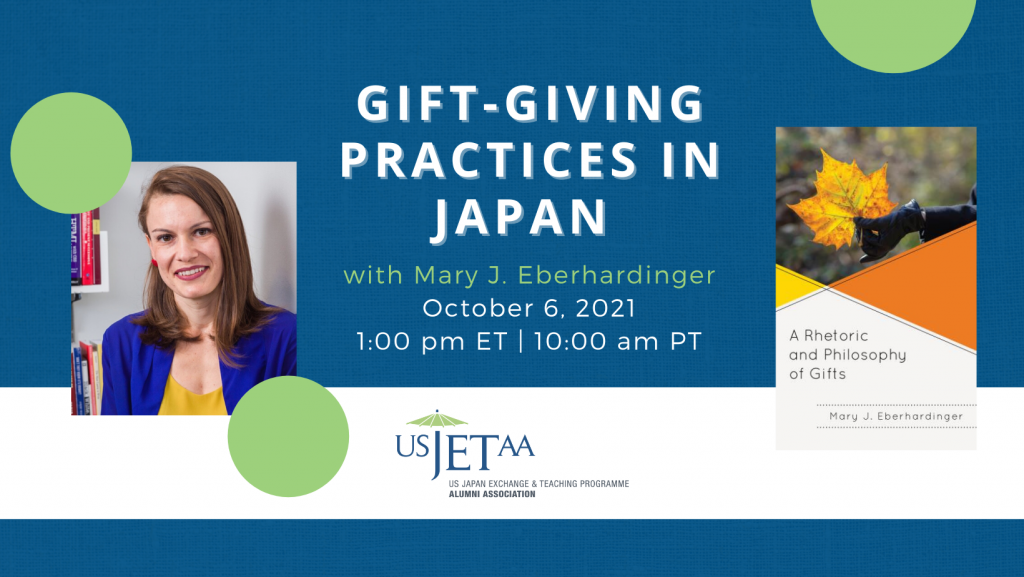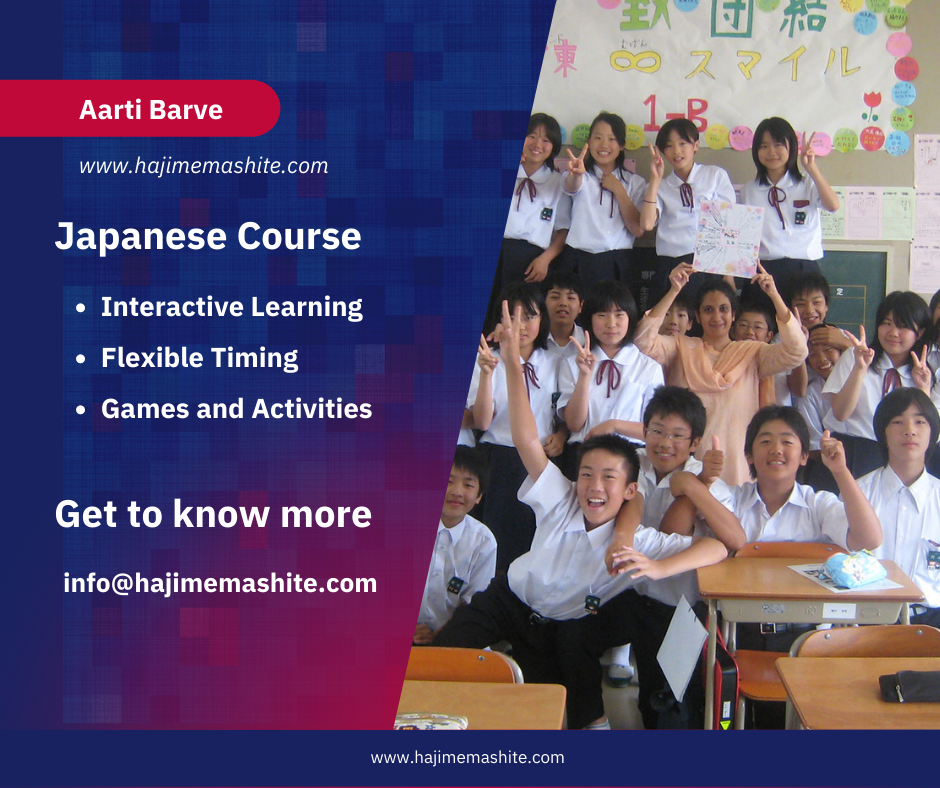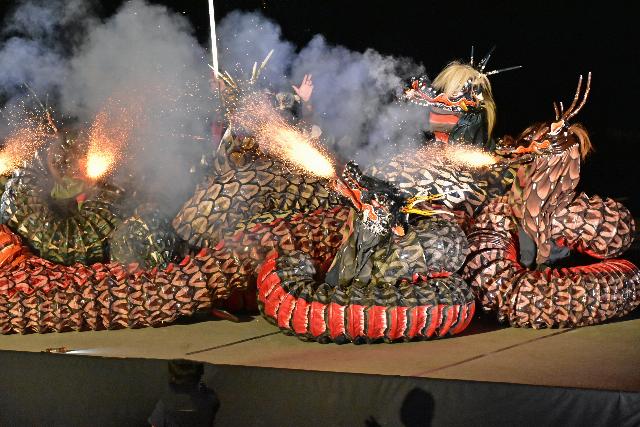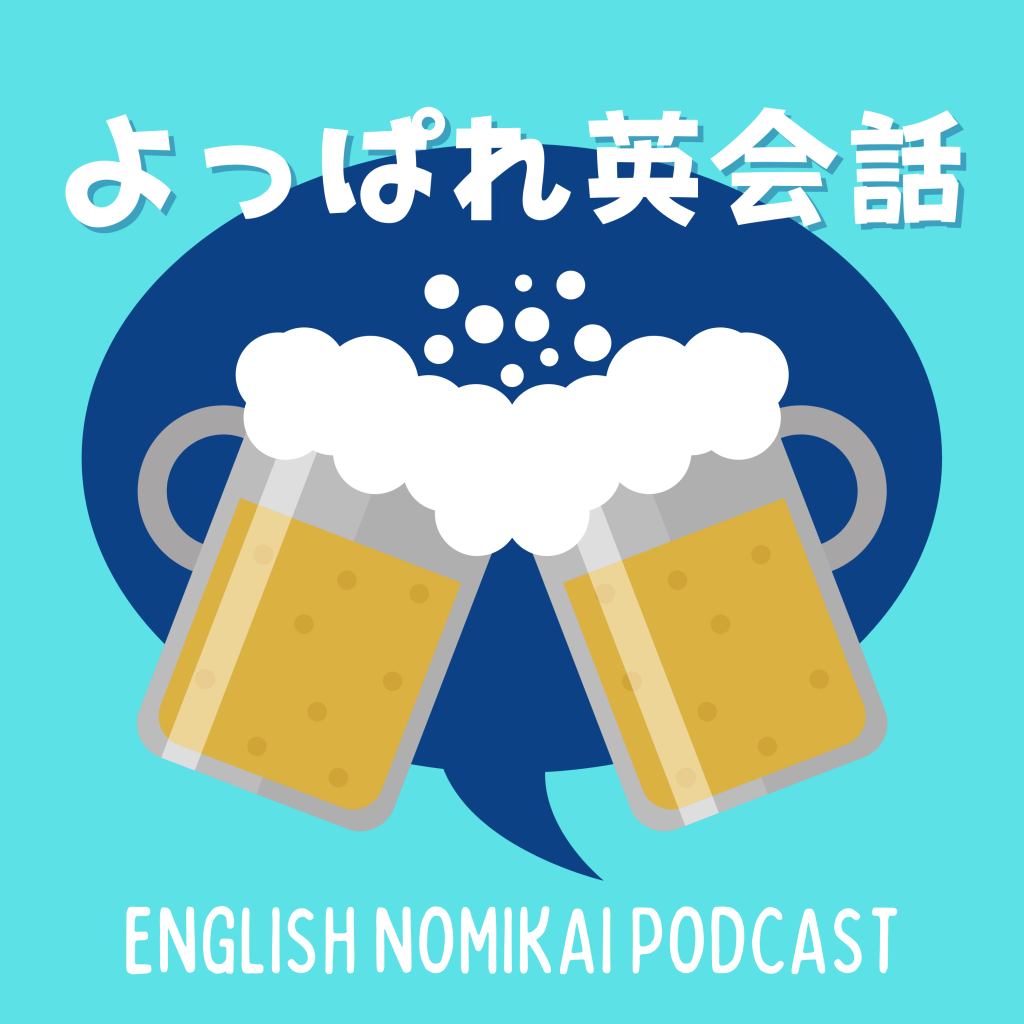Job: ESOL Teacher – Mercy Center (Remote and/or Bronx, New York, USA)
Posted by Sydney Sparrow. Click here to join the JETwit Jobs Google Group and receive job listings even sooner by email.
Position: ESOL Teacher
Posted by: Mercy Center
Location: Remote and/or Bronx, New York, USA
Contract: Full-Time
Thanks to JET alumna, Alexei Esikoff (Fukushima-ken, 2002-2003) for forwarding us this opportunity:
Here is the detailed info: We are currently looking for experienced educators who are available to work from September 2021 – June 2022 remotely and/or in-person. Please see the information you requested about the work we do and the ESOL instructor position below. We are looking for instructors for our evening classes (5:00 pm – 9:00 pm).
Profile
- Proficient English speakers with good working knowledge of English grammar and language use.
- Experienced teachers with good interpersonal skills who enjoy working in diverse linguistic and cultural settings.
- Passionate teachers looking to empower immigrant communities through English language education.
- Applicants with ESL teaching experience required. TESOL/CELTA certification highly preferred.
Author Suzanne Kamata to host panel discussion on identity at Japan Writers Conference
Posted by Tom Baker
JET alum Suzanne Kamata will lead a panel discussion on “Writing Identity” at the Oct. 15-17 Japan Writers Conference, a free event that is happening online. Suzanne is the author of multiple novels and nonfiction books, which you can read about at www.suzannekamata.com. The official descriptions of her talk appears below.
Suzanne Kamata
with Clara Kiyoko Kumagain, Kristin Osani, Clarissa Goenawan, Sara Fujimura
Writing Identity, From Inside and Outside
Panel Discussion
Fiction
Identity politics play a large part in determining which stories are published and how they are currently received in the English-speaking market. Generation Z readers — the audience for YA and New Adult titles — are especially aware of issues surrounding diversity, appropriation, and ownership. In this session, to be moderated by Suzanne Kamata, four authors of different backgrounds, writing about Japan from inside and out of their lanes, will discuss diversity, identity, inclusivity, and their own experiences and approaches to writing these in their own work.
In this era of #ownvoices and a heightened awareness of identity politics, what stories should be told, who should be allowed to write them, and how they should be presented are often contentious issues. In this moderated session, five authors of different backgrounds, writing inside and out of their lanes, will discuss diversity, identity, inclusivity, and their own experiences and approaches to writing these in their own work.
Award-winning author Suzanne Kamata was born and raised in the United States, but has lived in Japan for more than half of her life. She is the author or editor of 15 published books including, most recently, The Baseball Widow (Wyatt-Mackenzie Publishing, 2021) and Pop Flies, Robo-pets and Other Disasters (One Elm Books, 2020).
Clara Kiyoko Kumagai is from Canada, Japan and Ireland. She writes fiction and non-fiction for children and adults, and has had work published in Banshee, Room, Event, and Cicada. She currently lives in Tokyo.
Kristin Osani @KristinOsani is a freelance Japanese to English translator, writer, and editor
Her previous projects include Left Alive, Oninaki, Code Shifter, Dragalia Lost, and many more. Her short fiction is forthcoming in Flash Point SF.
Clarissa Goenawan is an Indonesian-born Singaporean writer. Her award-winning short fiction has appeared in literary magazines and anthologies in Singapore, Australia, Japan, Indonesia, the UK, and the US. Rainbirds, her first novel, has been published in eleven different languages.
Sara Fujimura @SaraFujimura is an award-winning young adult author and creative writing teacher. She is the American half of her Japanese-American family, and has written about Japanese culture and raising bicultural children for such magazines as Appleseeds, Learning Through History, East West, and Mothering, as well as travel-related articles for To Japan With Love. Her young adult novels include Tanabata Wish, Breathe, Every Reason We Shouldn’t (Tor Teen, 2020) and Faking Reality (Tor Teen, 2021). She lives in Phoenix with her husband and children.

Posted by Tom Baker
Joe Palermo, who came to Japan on the pre-JET MEF program in the 1980s, has written a memoir about what life in Japan was like back then. Next month, he will give a presentation at the Japan Writers Conference (a free event that is happening online this year) on how he went about self-publishing it – a topic sure to be of interest to anyone who has written about their own Japan experiences. The official descriptions of his talk appears below.
Joe Palermo
No Pianos, Pets or Foreigners! Self Publishing a Memoir in eBook, Paperback and Audiobook Format at Minimal Cost
Short Lecture with Q&A
Nonfiction
A young Japanese woman was running through Tokyo station screaming “Save me! Save me!” There was a Japanese man chasing her and closing in. He grabbed her wrist and caught her about 10 feet in front of me. The woman was still yelling “Save me! Save Me!” but the Japanese people in the crowded station ignored her, not wanting to get involved.
This is the beginning of one of the stories from my experience living in Japan in the 1980’s, where I had moved right after graduating university. It was still rare to see an American who could speak Japanese fluently. This book guides the reader though my many adventures navigating through Japanese culture while living in the outskirts of Tokyo, as well as Tokyo proper.
I will detail my experience writing and publishing a book and audiobook about my life in Japan, using Amazon KDP and Amazon ACX. I will talk about what I learned through the process and what I would do differently.
Joe Palermo has retired after 30+ years as a corporate executive at the Nielsen Company and Information Resources, Inc. (IRI). He lived and worked in Japan for eight years and is the author of “No Pianos, Pets or Foreigners! My Life in Japan in the 80’s”.


REGISTER
During this lunch seminar, Dr. Mary J. Eberhardinger will briefly present her latest research on gift-giving practices in Japan from her new book followed by an opportunity for questions and discussion on attendees’ personal experiences with gift-giving in Japan. Depending on the number of registrants, this event may use breakout rooms. Dr. Eberhardinger’s book “A Rhetoric and Philosophy of Gifts” examines the relationship between gifts and rhetoric, with particular attention given to Japan where she lived as a JET Program assistant language teacher in Hyogo from 2008-2010. Her book includes a review of related literature, analysis, examples, and personal anecdotes of overseas experiences. Eberhardinger concludes the book by offering implications and opportunities for interpreting gifts, thereby addressing why the question concerning the relationship between gifts and rhetoric matters for the larger landscape of international relations, intercultural friendship, and peace-making. Registrants will receive a discount code for purchasing her book.
Partially supported by funding from the Japan Local Government Center CLAIR and the Japan Foundation Center for Global Partnership.
Seeking Applicants for the 2021 EngageAsia Elgin Heinz Outstanding Teacher Award (Humanities Category)!
See: https://www.elginheinzaward.org/ for full details.
Deadline: October 15, 2021
One of the 2020 winners was a JET alum!
Nominations for the Award are also welcome anytime via info@engageasia.org
Application Details are Below and Here: https://www.elginheinzaward.org/apply
Application Details
The Elgin Heinz Award recognizes exceptional teachers who further mutual understanding between Americans and Japanese. The 2021 award will focus on humanities teachers and consist of an award grant of up to $1,000.
2021 applications are due on October 15, 2021.
The award is named in honor of Elgin Heinz for his commitment to educating students about Asia as well as for the inspiration he has provided to the field of pre-college education.
See the most recent Award Ceremony HERE.
Eligibility Requirements
The award is open to current full-time K-12 classroom teachers of any relevant subject in the United States. There are two award categories, one in the humanities and one in Japanese language. The 2021 award will be awarded only in the Humanities category and the 2022 award will focus on Japanese Language.
Previous award recipients often have over 10 years of teaching experience and have been engaged in teaching their students about Japan for a substantial period of time. Candidates must demonstrate sustained commitment to improving mutual understanding between Americans and Japanese, and must have made a significant contribution to enhancing students’ knowledge of Japan.
Applicants for the Japanese language category must have excellent command of the Japanese language and may be contacted by members of the selection committee to verify this.
Nomination Procedures
Applicants for the Elgin Heinz Outstanding Teacher Award are accepted in two ways:
- Educators who meet the requirements are encouraged to apply on their own. A nomination is not required.
- Nominations are also accepted, and we encourage those in the field to nominate educators whom they believe are deserving of this award.
Letters of Nomination should briefly highlight the qualifications of the candidate and must include his/her name, contact information, and indicate the school at which the candidate currently teaches.
EngageAsia, which is administering the award, will accept Letters of Nomination at any time and will inform candidates that they have been nominated for the Award. Those nominated must submit a full application as indicated below.
Nominators should keep in mind the deadline for applications is in September. Therefore, it is recommended that nominations be submitted by mid-July in order to provide potential candidates the time needed to compile their applications.
Letters of Nomination should be e-mailed to EngageAsia at: info@engageasia.org
Application Procedures & Deadlines for 2021
(Humanities category)
Applicants must submit the following documents by October 15, 2021 to be considered (please note: all materials must be submitted in one PDF document via e-mail to EngageAsia, the award administrator, at: info@engageasia.org):
1. Cover Sheet that includes the following information:
- Full name and home address
- School name and address
- E-mail and telephone contact information
- The subjects and grades you currently teach
- A list of Japan-related programs in which you have participated
- Names and contact information for those submitting letters of support
2. A narrative (not to exceed three (3) pages typed, double spaced) describing your efforts to further mutual understanding between Americans and Japanese through your classroom teaching. Please describe your classroom atmosphere and your approach to teaching about Japan and Japanese Language. Applicants should also highlight leadership positions held and detail how they have impacted other educators locally and/or nationally.
3. Three letters of support from individuals or organizations familiar with you and your teaching on Japan. A letter from a student explaining how your efforts affected his/her perceptions and understanding of Japan is permissible as a letter of support. One letter must come from the school’s principal or vice principal. Support letters can be sent under separate cover or included with all application materials.
4. A proposal not longer than three pages detailing how the candidate would utilize a grant of up to $1,000 (pending EngageAsia’s financial ability to offer a grant in 2021) to bolster Japanese language and/or Japan related endeavors in his or her classroom or at his or her school. The proposal must be specific and include a budget.
5. A professional resume
The application should be submitted in one PDF electronically to: info@engageasia.org
Deadline for 2021
Complete applications must be received by EngageAsia on or prior to October 15, 2021 to be considered for the 2021 award.
Review & Selection
A national selection committee administered by EngageAsia will review complete applications received by or on October 15, 2021. The selection committee consists of leaders in the field of education about Japan and Japanese language. The award winners will be announced in the winter of 2021.
JETwit’s JET Alum Movers & Shakers: Aarti Barve, Okayama-ken (2006-2008)
JETwit’s JET Alum Movers & Shakers is produced by Ryan Hata (Tottori-ken, 2014-2017), Margie Banin (Kochi-ken, 2005-2007), and Jim Walsh (Fukushima-ken, 2018-2020). Want to be featured next? Submit your information here.

Accomplishment: New website and customized online Japanese courses
More Information: Aarti Barve is the founder of https://hajimemashite.com/, a platform for customized online Japanese courses. With an experience of 17yrs + including, teaching at the University of Mumbai, Aarti prepares students for JLPT exams. She has designed a special fee structure for the JET alumni. JET alumni can use the HAJIME 21 code to avail a discount of 20% in fees. You can reach out on either email ids to know the detailed fee structure.
Public Information:
Website: https://hajimemashite.com/
Email: aarti.barve@hajimemashite.com; info@hajimemashite.com
Job: Various Positions with Japanese/American Companies – DSA International (USA)
Posted by Sydney Sparrow. Click here to join the JETwit Jobs Google Group and receive job listings even sooner by email.
Position: Various Positions with Japanese/American Companies
Posted by: DSA International
Location: USA
Contract: Full-Time
Thanks to Emi Tanaka from DSA International for passing along the following job openings across the United States:
New Job Listings! Japanese/American Companies seeking candidates nationwide. Japanese language or cultural background is a big plus! All of our positions are direct-hire with company benefits! See below a small listing of some of our urgent job openings!
- CPA Trainee/Experience-Mgr CPA Firms- San Diego, New York, Chicago, California to $150K/yr
- Accounting Manager -Arizona to $110K/yr
- Sales Engineers-California, Michigan, Chicago, Arizona, Indiana, Kentucky to $130K/yr
- CPA Trainee/Experience- San Diego, New York, Chicago, California to $150K/yr
Japan-Insights: The day the world plunged into darkness and arose again in light
************By Makoto Shirai, secretary, Japan-Insights Research Institute (Non-profit organization in Tokyo)

Dear Friends,
Have you enjoyed an ancient Japanese theater “Kagura”?
Let me introduce an essay from Japan-Insights archives.
The twenty-first one is on Kagura: Theater of Tradition Amid Innovation by Dr. Dieter Georg Adlmaier-Herbst.
https://topics.japan-insights.jp/Public/pdf/japan-insights_jp/topics/JIN_Kagura.pdf
Please share this expert’s experience!
Japan-Insights is a nonprofit open database compiled by leading experts in Japanese studies. The posts present a broad range of historical and contemporary topics that encourage visitors to engage with the real Japan through immersive experiences. Follow the Facebook page and website to learn about and share these insights from around the country!”
#japan #japaneseculture #izumo
JETAA Podcast Beat
JETAA Podcast Beat is a weekly round-up of current JET and JET alumni podcasts and podcast appearances compiled by Emmalee Manes (Toyama-ken, 2016-19)
Do you have a podcast or did you recently appear in a podcast? Help us share it with the community by filling out this form.
Welcome to the JETAA Podcast Beat! I hope the beat will be a great way for everyone to stay updated on JET alumni as well as current JET involvement in podcasts. If you have the chance, please enjoy listening to one of these recent episodes this week!

よっぱれい英会話 English Nomikai Podcast
In this eikaiwa podcast targeted to Japanese English-learners, Emmalee Manes (Toyama-ken, 2016-19) talks to fellow JET alumni, current JETs, and Japanese English teachers and friends about cultural differences between Japan and their home countries (all while sharing some drinks!)
Emmalee and Lilly (Toyama-ken, 2015-18) talk about life in Tokyo during the pandemic, their favorite Tokyo neighborhoods, and ways that Nashville and Tokyo are similar.
インスタ: @yoppareikaiwa

Everyone learning Japanese needs a senpai – this podcast is your digital senpai. Join Daniel (Fukushima-ken, 2005-08) from HowToJapanese.com and guests to learn what strategies have been effective for them as they study, live, and work in Japan and using Japanese.
S02E20 – Instinctual Nattō and Introversion
On the final episode this season, I talk about the importance of celebrating your little victories as you study a language. And in Japanese, I think about how to balance introversion and extroversion as you’re studying. Listen until the end – I provide a short update on one of the episodes from Season 1.
Feel free to reach out with any questions or 悩み事 to howtojapanese@gmail.com.
You can also follow How to Japanese on Twitter, Instagram, TikTok, and Facebook.

Reinventing Professionals
This podcast hosted by Ari Kaplan (Hyogo-ken, 1993-94) is designed to offer ideas, guidance, and perspectives on how to effectively navigate a perpetually shifting professional landscape, with a unique focus on the legal industry and the technology that is driving its evolution.
I spoke with Nehal Madhani, the founder and CEO of Alt Legal, a company that provides trademark docketing software. We discussed the challenges that Alt Legal helps trademark professionals address, its 2021 Alt Legal Connect virtual conference, what attendees can expect, and how events are evolving.
Posted by Tom Baker
In non-pandemic years, the Japan Writers Conference is held on an autumn weekend at a university somewhere in Japan. This year it is being held online (Oct. 15-17), which means you can participate no matter where in the world you are.
At least nine JETs (including classic-edition MEFs) will be among the published writers giving presentations on how to write well – and how to sell your work. These include memoirist Joe Palermo, poet Michael Frazier, poet and picture book author Holly Thompson, textbook author Todd Jay Leonard, and travel consultant Joy Jarman-Walsh. More JET alums are mentioned in the (slightly JET-edited) official press release below:
Published writers to share how they did it
TOKYO (Sept. 14, 2021) – The Japan Writers Conference has announced a lineup of more than 30 presentations by published writers in a variety of fields, from food writing to screenwriting and from to novels to haiku, for its 15th annual event on Oct. 15-17.
Due to the pandemic, this year’s conference will be held online, with Zoom details to be made available at http://japanwritersconference.org/email-updates/. As always, it will be a free, interactive event open to all who are interested in the art, craft and business of writing.
Poetry, memoir, fiction and publishing will be major themes. Tokyo Poetry Journal associate editor Zoria Petkoska will discuss how technology enables “cyber poetry,” while noted haikuist Michael Dylan Welch will look into the past to examine the use of place names. Karen Hill Anton and Lianne Wakabayashi will discuss crafting their Japan-related memoirs. Novelist and JET Joanne Anderton will explore mixing autobiography into speculative fiction, while novelists Charles Kowalski (another JET) and Michael Pronko will speak about creating characters. Multiple writers will share tips on both traditional publishing and self-publishing.
Astrophysicist and author Elizabeth Tasker will participate in a panel discussion on “Social Media for Writers,” while young adult novelist Sara Fujimura will join a panel on “Writing Identity.” Prominent multi-genre author – and JET – Suzanne Kamata will be part of both panels.
For more variety, journalist Melinda Joe will serve up the basics of food writing, photographer Edward Levinson will discuss finding inspiration in nature, filmmaker Yuri Kageyama will premiere a work on the Fukushima nuclear disaster, and “Jeopardy!” quiz show champion Tom Baker, still another JET, will describe how to write trivia questions. And that’s far from all.
Details on this year’s event can be found at http://www.japanwritersconference.org
Inquiries should be directed to japanwritersconference@gmail.com.
Job: Assistant Director – Hyogo Business & Cultural Center (Seattle, WA, USA)
Posted by Sydney Sparrow. Click here to join the JETwit Jobs Google Group and receive job listings even sooner by email.
Position: Assistant Director
Posted by: Hyogo Business & Cultural Center
Location: Seattle, WA, USA
Contract: Full-Time
Thanks to JET alumnus, Braden Bennight (Aichi-ken, 2014-2017) for passing along the following job opening:
The qualifications can be found in the description, but the ideal candidate will be someone bilingual/fluent in Japanese, who has experience working in a Japanese office environment. JET alumni who were CIRs seem to more commonly fulfill those qualifications, but application to the job is of course not limited to former CIRs.
Please find below English and Japanese versions of the job description.
Job: Education and MEXT Scholarship Coordinator – Embassy of Japan (Washington D.C., USA)
Posted by Sydney Sparrow. Click here to join the JETwit Jobs Google Group and receive job listings even sooner by email.
Position: Education and MEXT Scholarship Coordinator
Posted by: Embassy of Japan
Location: Purchase, NY, USA
Contract: Full-Time
Here’s a job received directly from the Embassy of Japan in Washington DC:
The Embassy of Japan is seeking a highly motivated, team-oriented individual for the position of Education and Ministry of Education, Culture, Sports, Science and Technology (MEXT) Scholarship Coordinator. This individual is primarily responsible for managing the schedules and assisting the activities of the diplomats in the Public Affairs Section, as well as coordinating the Embassy’s MEXT Scholarship Program. Please see below for a detailed listing of responsibilities.
Working hours are 9:00 am – 5:30 pm, Monday through Friday, with lunch time receptionist duty once a month and occasional weeknight and/or weekend events (paid overtime). Salary is commensurate with experience and the skills of the candidate. Benefits include group health insurance coverage, paid time off, sick leave and an annual bonus. There is a potential salary increase based on individual performance. The minimum monthly base salary for this position is $3,500 USD.
Application Process: For more information and to apply, please click here.
(FILLED) Job: Project Director – Digital Museum of the History of Japanese in New York (Remote)
Posted by Sydney Sparrow. Click here to join the JETwit Jobs Google Group and receive job listings even sooner by email.
Position: Project Director, Digital Museum of the History
Posted by: Digital Museum of the History of Japanese in New York
Location: Purchase, NY, USA
Contract: Part-Time, Remote
Here’s a job passed along directly from the Japanese American Association of New York:
Digital Museum of the History of Japanese in New York is seeking a qualified individual for the position of Project Director. This role will be responsible for the continued expansion and maintenance of the museum’s collection, including collecting, organizing, and cataloguing new materials, along with managing the museum’s website and archive.
Read MoreJob: Multiple Positions – Morikami Museum and Japanese Gardens (Delray Beach, Florida)
Posted by Sydney Sparrow. Click here to join the JETwit Jobs Google Group and receive job listings even sooner by email.
Position: Multiple Positions
Posted by: Morikami Museum and Japanese Gardens
Location: Delray Beach, Florida, USA
Contract: Full-Time
Thanks to JET alumna Wendy Lo (Toyama-ken, 2002-2005) for passing along several job openings at the Morikami Museum and Japanese Gardens where she works:
Application Process: Job description and details on how to apply can be found here: https://morikami.org/job-opportunities/
Job: Research Analyst – Intralink (Ideally, California ([but remote locations possible])
Posted by Sydney Sparrow. Click here to join the JETwit Jobs Google Group and receive job listings even sooner by email.
Position: Research Analyst, Open Innovation Group
Posted by: Intralink
Location: Ideally, California (but remote locations possible)
Contract: Full-Time
Thanks to JET alumnus, Alan Mockridge (Iwate-ken, 1992-1994) for passing along the following job opening with his organization:
Intralink is an international market expansion and corporate innovation consultancy with clients in Europe, America and East Asia. We have multiple former JETs working on our team. To support our innovation consulting work for Japanese clients as well as our group marketing activities, we are seeking a full-time Research Analyst in our Open Innovation Group.
You will work alongside project teams tasked with delivering projects for these clients, and with our sales and marketing team to support a variety of promotional activities, including:
Read More
